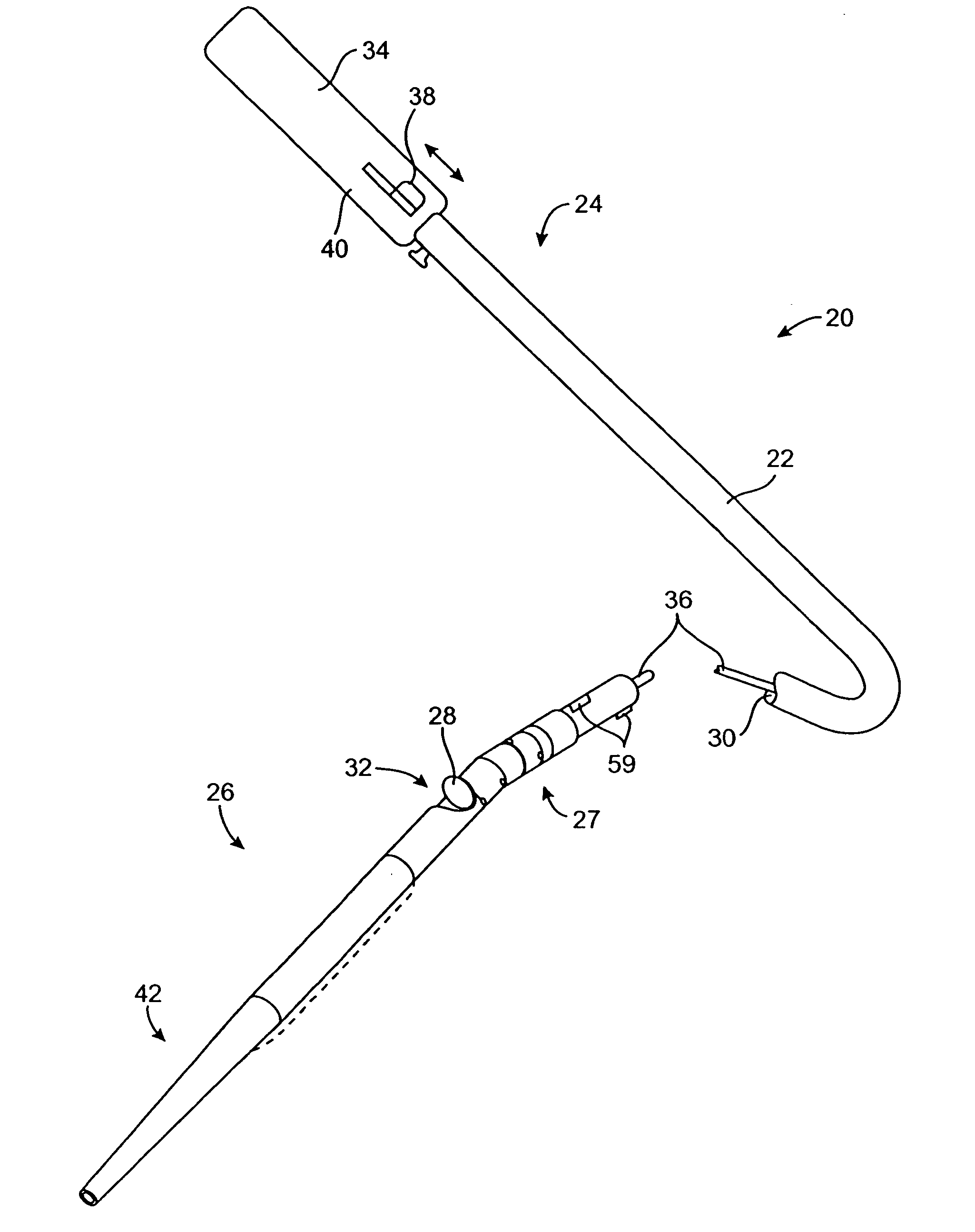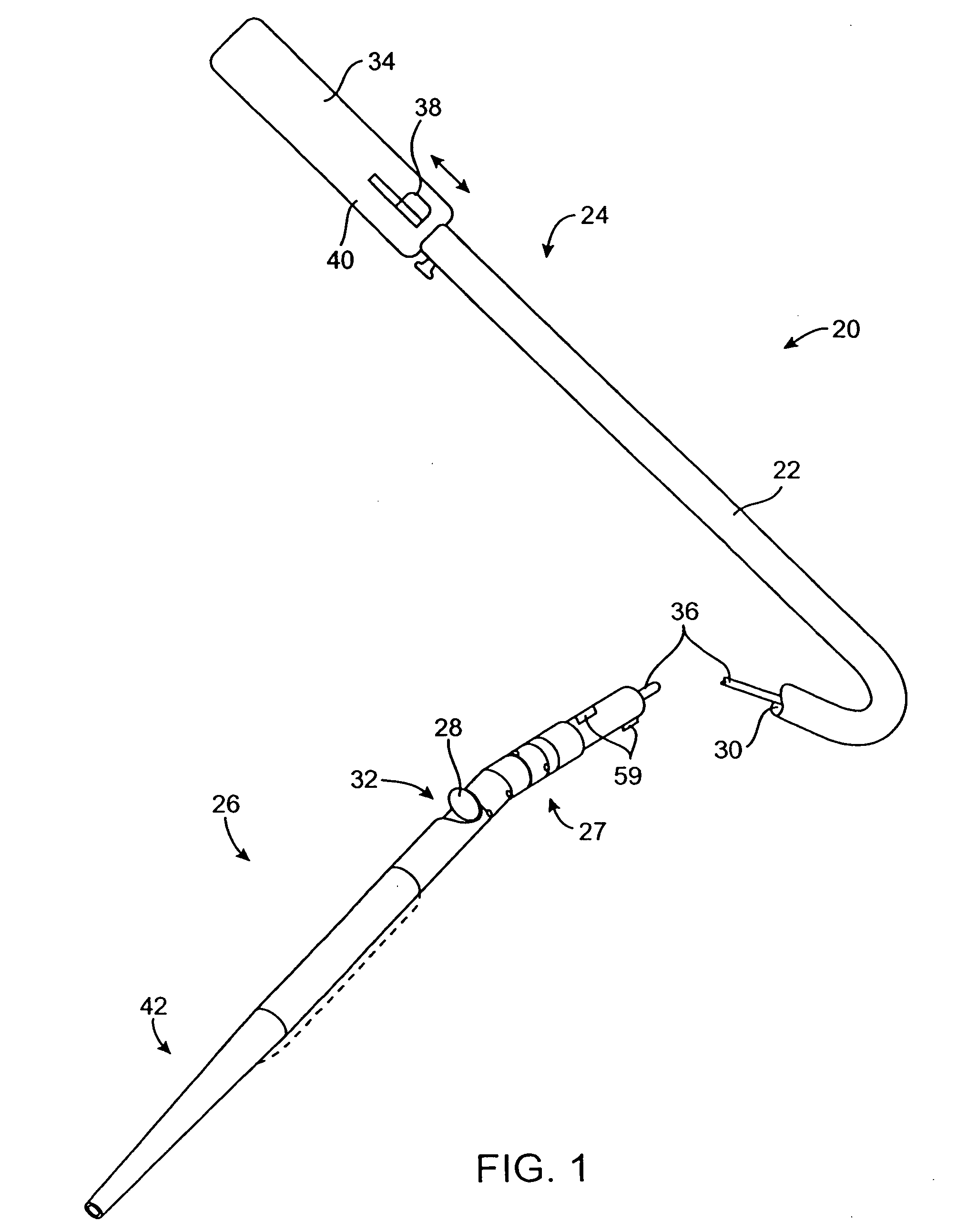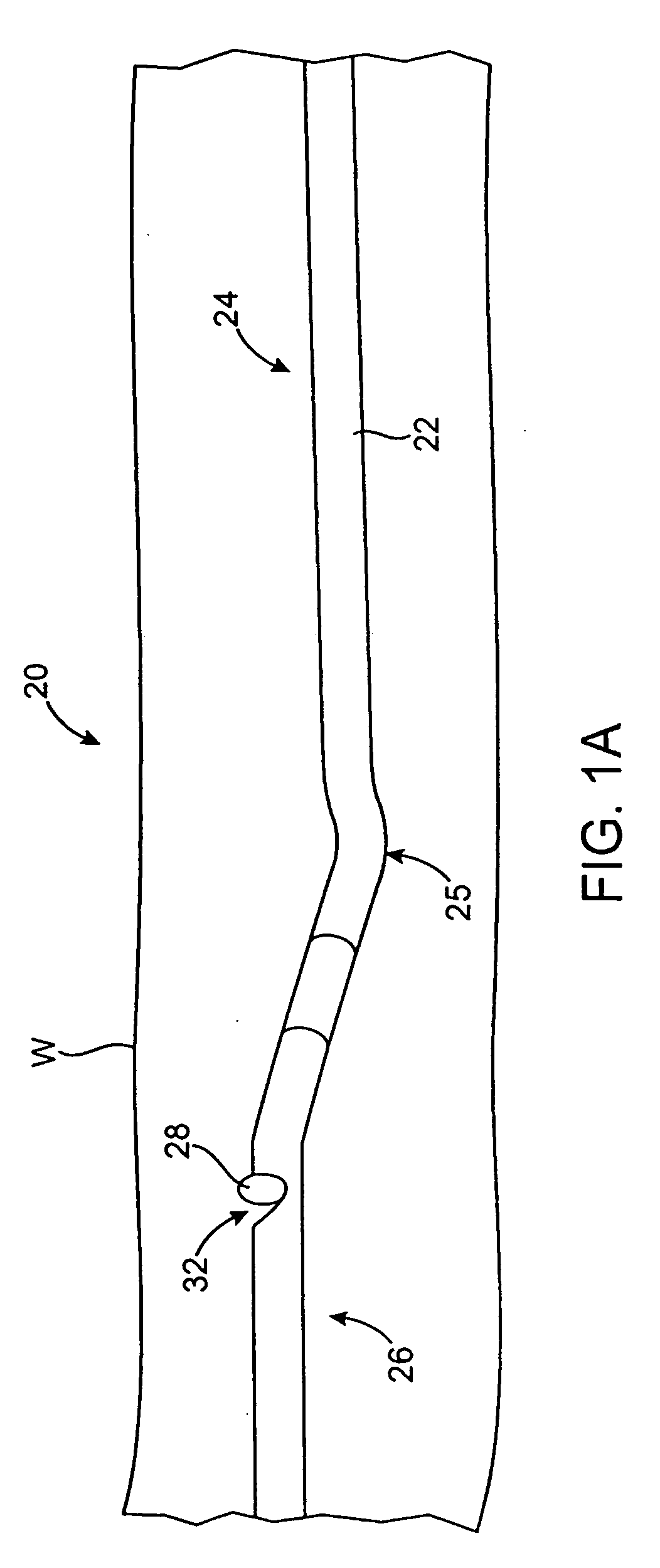Debulking catheters and methods
- Summary
- Abstract
- Description
- Claims
- Application Information
AI Technical Summary
Benefits of technology
Problems solved by technology
Method used
Image
Examples
Embodiment Construction
[0063] The catheters and methods of the present invention are designed to debulk atheroma and other occlusive material from diseased body lumens, and in particular coronary arteries, de novo lesions, and in-stent restenosis lesions. The catheters and methods, however, are also suitable for treating stenoses of body lumens and other hyperplastic and neoplastic conditions in other body lumens, such as the ureter, the biliary duct, respiratory passages, the pancreatic duct, the lymphatic duct, and the like. Neoplastic cell growth will often occur as a result of a tumor surrounding and intruding into a body lumen. Debulking of such material can thus be beneficial to maintain patency of the body lumen. The catheters and methods of the present invention also provide methods that provide lumenectomy samples or materials that are of higher quality and quantity that typically have been provided by prior devices. The material provided is typically a contiguous strip of tissue removed from the...
PUM
 Login to View More
Login to View More Abstract
Description
Claims
Application Information
 Login to View More
Login to View More - R&D
- Intellectual Property
- Life Sciences
- Materials
- Tech Scout
- Unparalleled Data Quality
- Higher Quality Content
- 60% Fewer Hallucinations
Browse by: Latest US Patents, China's latest patents, Technical Efficacy Thesaurus, Application Domain, Technology Topic, Popular Technical Reports.
© 2025 PatSnap. All rights reserved.Legal|Privacy policy|Modern Slavery Act Transparency Statement|Sitemap|About US| Contact US: help@patsnap.com



